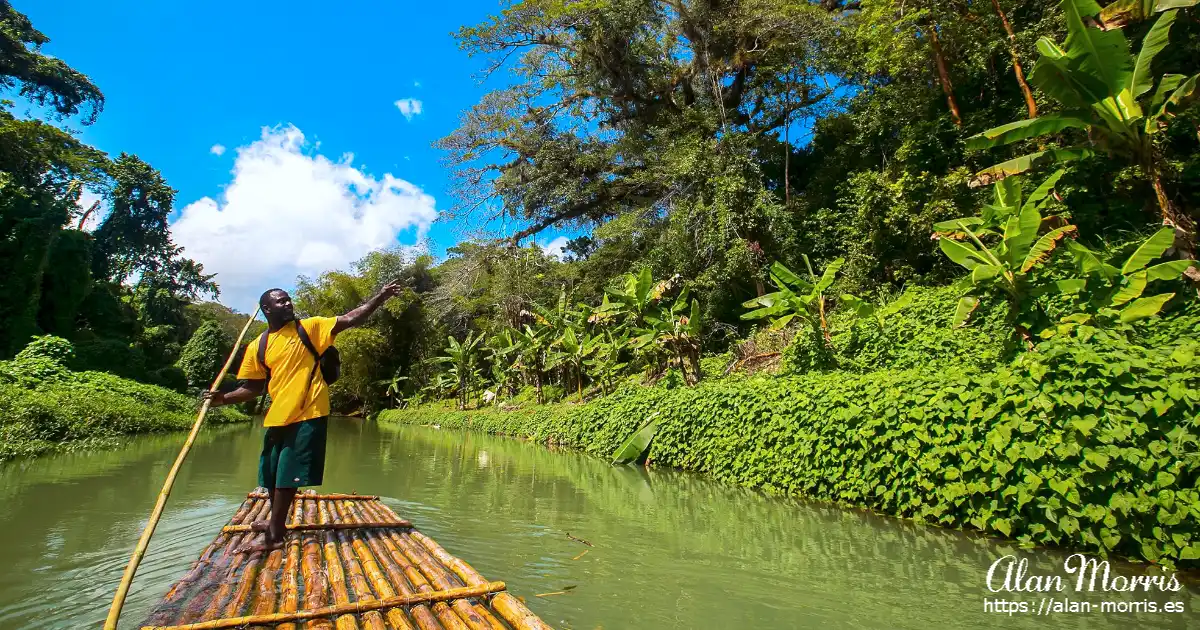The Black River, located in the parish of Saint Elizabeth, Jamaica, is one of the country's longest and most fascinating rivers.
Stretching approximately 53.4 km (33.2 miles), this river is steeped in history, abundant in biodiversity, and plays a vital role in local tourism and commerce.
Origins and Geography.
The Black River originates in the Cockpit Country, an area known for its rugged limestone terrain. Initially, the river runs underground before emerging near Siloah, meandering through lush landscapes, including the cane fields of the Appleton Estate. As it moves downstream, the river gains momentum, forming small waterfalls and rapids near Maggotty.
The river eventually flows into the Lower Morass, a vast wetland area that serves as a crucial ecological habitat. Finally, it empties into the Caribbean Sea at the town of Black River, which is named after the waterway.
The Name and Biodiversity.
The name "Black River" comes from the dark colouration of the riverbed, which is caused by thick layers of decomposing vegetation. This unique feature sets the river apart and contributes to its rich ecosystem.
The Black River and its surrounding morass (wetlands) are home to over 100 species of birds, including herons, egrets, and ospreys. It is also one of the few places in Jamaica where American crocodiles (Crocodylus acutus) are found to thrive. Due to habitat destruction, however, their numbers have declined, making conservation efforts crucial.
In addition to birds and crocodiles, the Black River supports a diverse array of fish species, including mangrove snappers, snook, and mullet. The river’s extensive mangrove system is remarkable, with trees that extend aerial roots into the water, creating spectacular natural formations.
Economic and Cultural Significance.
Historically, the Black River played a vital role in logwood production, as tree trunks were floated downstream for export. Today, however, the river serves as a key attraction for eco-tourism, with motorboats transporting visitors into the scenic lower reaches.
The surrounding communities, such as Middle Quarters, have also gained fame for their locally harvested crayfish, known as "hot pepper shrimps." The fishing techniques used in this area have been passed down for generations, originally brought to Jamaica by African slaves.
Conservation Efforts.
Recognising the ecological importance of the Black River, a significant portion of its basin, including the Black River Great Morass, has been designated as a Ramsar Wetland. This international classification highlights the need for sustainable management to protect the region’s fragile ecosystem.
Ongoing conservation efforts aim to preserve the natural beauty and biodiversity of the Black River while balancing tourism and local livelihoods.
Conclusion.
The Black River is more than just a waterway—it is a cultural, ecological, and historical treasure of Jamaica. Whether exploring its meandering course, observing its unique wildlife, or appreciating its historical significance, the Black River remains a source of wonder and pride for the island.
